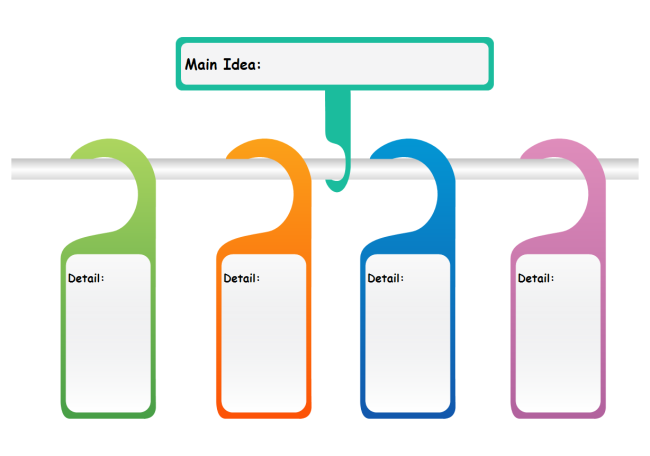This blog was designed by students of the ENP6 "Antonio Caso" for the subject of English VI. It will serve to support the watched topics in unit 1 to 5 of the matter.
lunes, 18 de enero de 2016
Skimming and Scanning.
SKIMMING:
-> Method of rapidly moving the eyes over text with the purpose of getting only the main ideas and a general overview of the content. Is useful in three different situations:
a) Pre-Reading
b) Reviewing
c) Reading
SCANNING:
-> Rapidly covers a great deal of material in order to locate a specific fact or piece of information.
Scanning is very useful for finding a specific name, date, statistic or fact without reading the entire article
SKIMMING AND SCANNING TEXT <- Click to view.
-> Method of rapidly moving the eyes over text with the purpose of getting only the main ideas and a general overview of the content. Is useful in three different situations:
a) Pre-Reading
b) Reviewing
c) Reading
SCANNING:
-> Rapidly covers a great deal of material in order to locate a specific fact or piece of information.
Scanning is very useful for finding a specific name, date, statistic or fact without reading the entire article
SKIMMING AND SCANNING TEXT <- Click to view.
miércoles, 13 de enero de 2016
Main Idea.
Whats the big idea?
Main idea: The purpose of the paragraph or text
-> Some information is not as important.
-> Good reader = Key ideas
-> All information should connect to the main idea.
Identify main idea:
-> Read the whole text
-> Ask: What is the autor doing here?
-> Read first and last sentence.
CAREFUL:
-> "Another good title for this passage would be..." is another way to ask for the main idea.
Main idea: The purpose of the paragraph or text
-> Some information is not as important.
-> Good reader = Key ideas
-> All information should connect to the main idea.
Identify main idea:
-> Read the whole text
-> Ask: What is the autor doing here?
-> Read first and last sentence.
CAREFUL:
-> "Another good title for this passage would be..." is another way to ask for the main idea.
martes, 12 de enero de 2016
Main Idea.
* May be Implied.
* Who or What is the paragraph about.
* The main idea may be split.
* The first sentence of a paragraph.
* Central or most important idea.
* Point of view.
* Sets the direction of the paragraph.
* May be found in any sentence.


* Who or What is the paragraph about.
* The main idea may be split.
* The first sentence of a paragraph.
* Central or most important idea.
* Point of view.
* Sets the direction of the paragraph.
* May be found in any sentence.
Cognates, Prefixes and Suffixes.
a) Check the following sites.
* htttp://www.saberingles.com.ar/curious/falsefriends.html
* books.google.com/books?isbn=0521793629
* htttp://ueno.cool.ne.ip/let/prefix.html
b) Look up in a dictionary 10 cognates and 10 false cognates in English. Write the name of the dictionary or the website where you found the information.
c) Check the following site and do three of the activities given and report your results and write a reflection about this activity.
* http://www.esl-galaxy.com/prefixsuffix.html
* htttp://www.saberingles.com.ar/curious/falsefriends.html
* books.google.com/books?isbn=0521793629
* htttp://ueno.cool.ne.ip/let/prefix.html
b) Look up in a dictionary 10 cognates and 10 false cognates in English. Write the name of the dictionary or the website where you found the information.
c) Check the following site and do three of the activities given and report your results and write a reflection about this activity.
* http://www.esl-galaxy.com/prefixsuffix.html
Critical Thinking.
Watch the videos and answer:
a) http://study.com/academy/lesson/what-is-critical-thinking-definition-skills-meaning.html
b) http://www.youtube.com/watch?v=J0yEAE5owWw
c) http://www.youtube.com/watch?v=J0yEAE5owWw
Answer:
a) What is the definition of crititcal thinking?
b) What is its purpose?
c) What are the skills developed by the critical thinking?
d) What is its meaning?
e) How can you use the critical thinking in your daily life?
f) What are some examples of critical thinking?
a) http://study.com/academy/lesson/what-is-critical-thinking-definition-skills-meaning.html
b) http://www.youtube.com/watch?v=J0yEAE5owWw
c) http://www.youtube.com/watch?v=J0yEAE5owWw
Answer:
a) What is the definition of crititcal thinking?
b) What is its purpose?
c) What are the skills developed by the critical thinking?
d) What is its meaning?
e) How can you use the critical thinking in your daily life?
f) What are some examples of critical thinking?
Affixes.
An affix is added to the root of
a word to change its meaning.
An affix added to the front of a word is known as a prefix. One added to the back is known as a suffix. Sometimes, prefixes are hyphenated.
An affix added to the front of a word is known as a prefix. One added to the back is known as a suffix. Sometimes, prefixes are hyphenated.
Examples of Affixes
Here are some examples of affixes:
- incapable
(The affix is the prefix in.)
- ex-President
(The affix is the prefix ex-.)
- laughing
(The affix is the suffix ing.)
Most Common Prefixes. The four most common prefixes
aredis-, in-, re-, and un-. These
account for over 95% of prefixed words.
Most Common Suffixes. The four most common suffixes are-ed, -ing, -ly, and -es. These account for over 95% of suffixed words.
Most Common Suffixes. The four most common suffixes are-ed, -ing, -ly, and -es. These account for over 95% of suffixed words.
Suscribirse a:
Comentarios (Atom)



